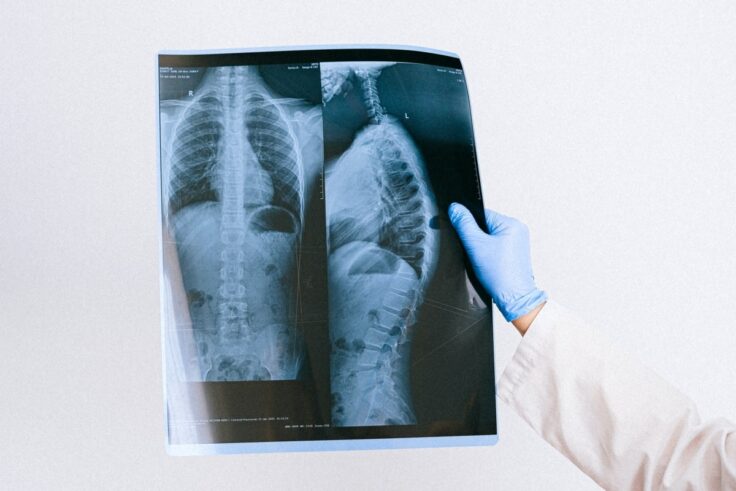Medical X-Rays: How Do They Function And What Are Their Benefits?

Medical X-rays are non-invasive and painless imaging tests used by doctors to diagnose diseases and guide them through different treatments. Here’s more on this.
X-rays are an efficient imaging technology that people have been using for over 100 years.
The procedure usually lasts less than one hour and you immediately receive black-and-white images of what’s going on inside your body.
Read this article to get to know how X-rays function and which types of tests rely on them. Plus, you’ll learn about the strong and weak sides as well as the side effects of this method.
What’s The Essence Of This Technology?
X-rays are a naturally occurring form of electromagnetic radiation. Every day, we receive tiny amounts of it from space and the surrounding nature.
During a test, the person or part of their body is placed in front of an X-ray detector and illuminated by short X-ray pulses.
Once the image is ready, trapped gases inside our bodies will show up as dark patches. Bones will appear white since they are rich in calcium. The doctor will interpret the image right on the spot.
Types Of X-Ray Tests
If the doctor tells you that you need to get an X-ray, it might mean one of the following types of tests:
1. Radiography
It’s a rather simple and affordable test that involves the tiniest amounts of radiation.
Thanks to it, the medical professional will be able to check your chest and teeth as well as see bone fractures.
2. Fluoroscopy
Compared to radiography, this method involves a slightly larger dose of ionizing radiation — but still, this is a harmless amount.
This test enables the doctor to estimate the activity of the patient’s gut after a barium meal.
3. CT Scan
The person lies on a table and enters a ring-shaped scanner. X-rays pass through their organism and create a 3D image of “slices” of the patient’s body.
Since many images are created in one go, such a test involves the largest dose of radiation, compared to the two previous ones.
The professional who carries out all these tests is known as a radiologist or radiographer.
Risks Involved With Medical X-Rays
The World Health Organization and the United States authorities classify X-rays as a carcinogen. This technology might cause mutations in human DNA and the patient might develop cancer later in life.
However, the risks are minimal and the advantages of the technology outweigh its drawbacks.
The individual’s exposure to background radiation might vary depending on which part of their organism is examined.
For instance, during a chest X-ray, you would receive a dose that roughly equals 2.4 days of natural background radiation, and during a CT scan of the abdomen — roughly 2.7 years.
Scientists have estimated that by the age of 75 years, X-rays can increase the risk of cancer by 0.6 to 1.8 percent.
Only 0.4 percent of oncological diseases in the U.S. are caused by CT scans. An average computed tomography might raise the chance of fatal cancer by 1 in 2,000.
Yet some scientists disagree: they state that our organisms should be able to repair this damage so that it doesn’t leave any lasting mutations.
However, the above-mentioned facts are valid only for grown-ups. Kids might need to avoid CT scans because it might increase the risk of leukemia and brain cancer.
Children should undergo this type of test only when absolutely necessary.
Side Effects
If a person receives a large dose of ionizing radiation within a few hours a day, they might faint, bleed, vomit and start losing hair and skin.
But in the case of an X-ray, the person is exposed to such a tiny amount of radiation that it doesn’t cause any side effects.
You’ll feel well after the procedure and will be able to immediately concentrate on your daily activities.
Benefits
Doctors and their patients appreciate X-rays for the following reasons:
- It’s a non-invasive and painless test.
- When the medical professional needs to insert a stent, a catheter, or another device inside the body, medical X-rays can guide them.
- This method also comes in handy for treating tumors and removing blood clots or other similar blockages.
- While it might not be enough to have an X-ray to diagnose a disease or condition, it delivers very accurate results when combined with other methods.
- It might even reveal a feature or pathology that is different from the initial reason for the imaging.
No matter how medical technologies evolve, the industry will be likely to rely on X-rays for decades to come.
The Takeaway
Hopefully, you found this article informative and it helped you to better understand the essence and advantages of medical X-rays.
Radiography, fluoroscopy, and CT scans are all based on X-rays and involve only small doses of ionizing radiation that can’t pose immediate harm to a human organism.
You should be able to effortlessly find X-ray near you because this is a very popular test. It’s painless, non-invasive, and enables doctors to accurately diagnose various health conditions.